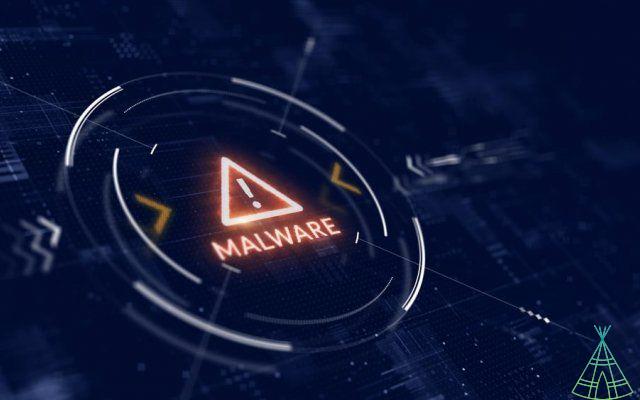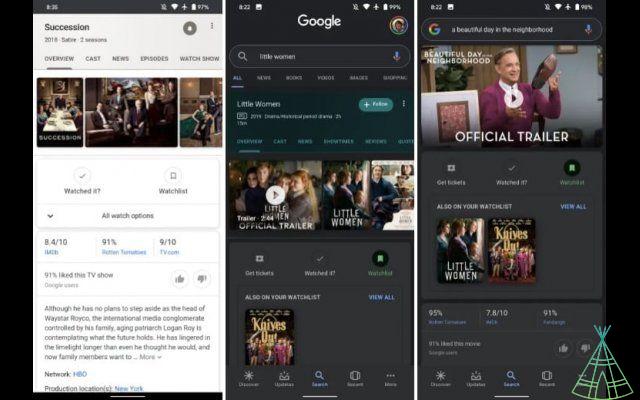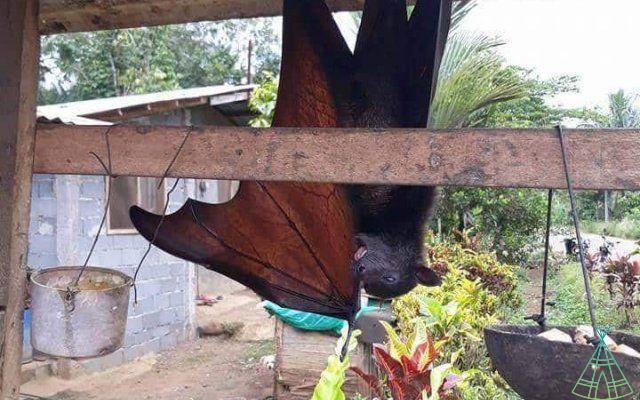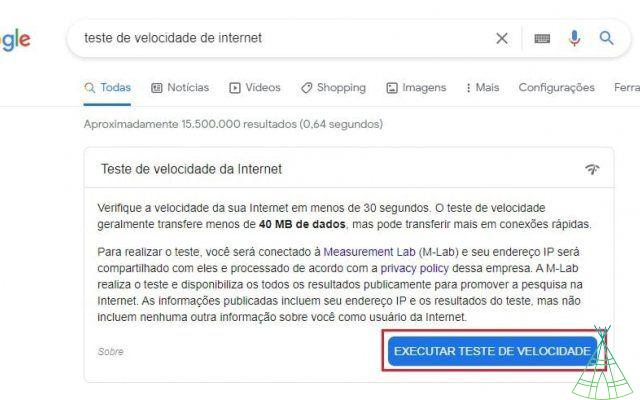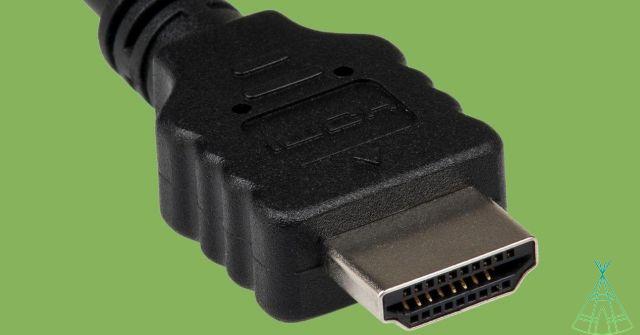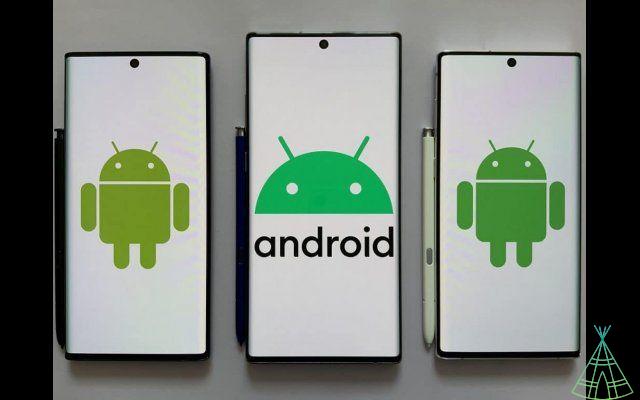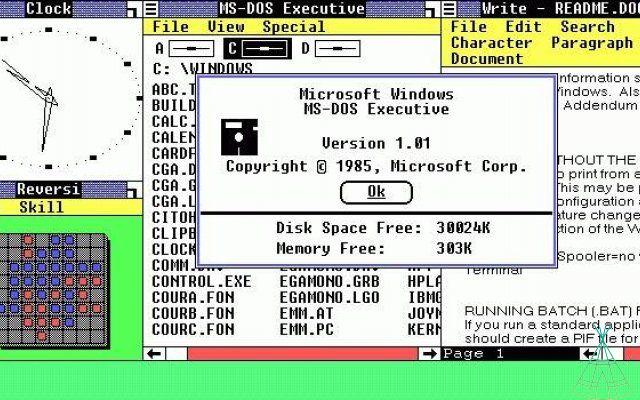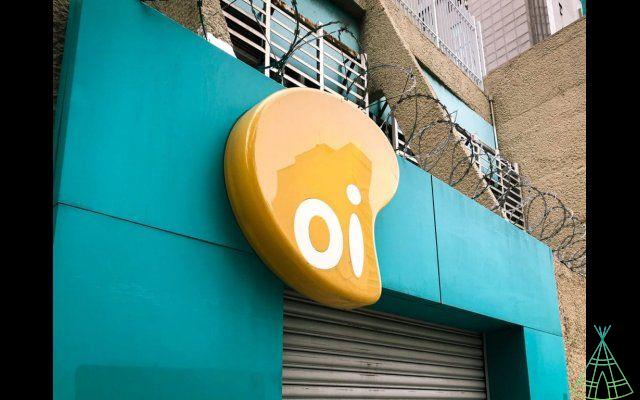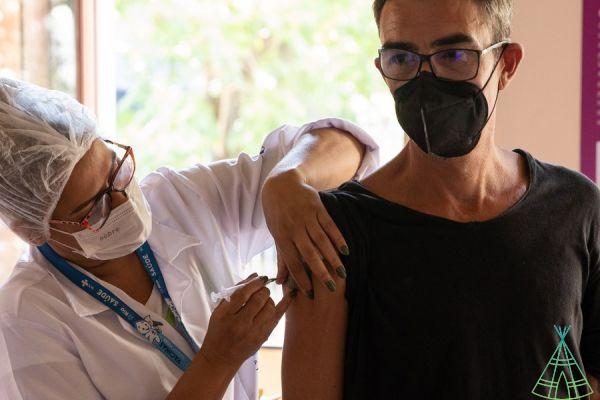After Brasília, Porto Alegre, Belo Horizonte and João Pessoa, São Paulo also started to receive the 5G signal. But there are still many questions about the fifth generation of mobile internet. After all, which cell phones are compatible with the technology in Brazil so far? Do I need to change the SIM card to access 5G? Will 4G cell phones have access to a 5G connection? Check it all out in this special Technology Refugee!
Read more:
- Why Optical Fiber Matters for Faster 5G
- 5G arrives in Brazil! What changes in practice?
- Understand why your broadband internet is bad even at high speed
What are the 5G SA compatible cell phones in Brazil (so far)
If your cell phone is from Samsung, the chance is greater, as the company has 14 5G SA compatible models launched in Brazil.
Other companies that are betting on the differential of the new connectivity are Motorola, 6 devices compatible with 5G SA in Brazil, and Xiaomi, 8 models, three of them Poco brand, two Redmi and three own brand. In addition, Asus has 4 models compatible with 5G SA networks already launched here.
All iPhone 12 and 13 and SE (3rd generation) models will be able to run pure 5G from September this year. The promise comes from the Minister of Unions Fábio Faria, after meeting Apple in the United States, but the apple company itself has yet to enter the date.
Check the list below and see if your smartphone is included.
Samsung
- Z Fold 3 5G e Z Flip 3 5G
- S21 5G, S21+ 5G e S21 Ultra 5G
- S22 5G, S22+ 5G e S22 Ultra 5G
- S21FE
- A52s 5G, A73 5G, A53 5G, A33 5G e M53 5G
Motorola
- Edge 20
- Edge 30 e Edge 30 Pro 5G
- Moto G200 5G, Moto G62 and Moto G82
Xiaomi (including Poco and Redmi)
- Poco M3 Pro 5G, M4 Pro 5G and X4 Pro 5G
- Redmi Note 10 5G e Note 11 Pro 5G
- Xiaomi 11 Lite 5G NE, Xiaomi 12 e 12 Lite
Asus
- ROG Phone 5, ROG Phone 5s e ROG Phone 5s Pro
- Zenfone 8 and Zenfone 8 Flip
In addition to the aforementioned companies, two others also have a single model each of 5G SA compatible devices in Brazil.
Nokia / HMD Global
- Nokia G50
Infinix
- Infinix Zero 5G
Do I need to change the SIM card to access 5G?
O Technology Refugee prepared a list of the procedures of each operator in the transition to 5G, the list of devices enabled for the new network and the coverage map of the companies.
But first, it is important to point out that the 5G signal that is starting to be transmitted in the Spanish capitals is called 5G SA (standalone), which is considered a pure signal because it operates in the 3,5GHz frequency. Prior to that, carriers provided a 5G NSA (non-standalone) signal that was transmitted over 4G antennas at a lower frequency (2,5GHz).
Read more:
- 5G signal available in Porto Alegre, Belo Horizonte and João Pessoa until Friday (29)
- 5G arrives in Brazil! What changes in practice?
- 5G Special: everything you need to know about this technology
Living
According to Vivo's website, customers with 4G chips will be able to browse using the 5G network as soon as they are available in their city. The operator warns that just to use 5G SA (standalone) it will be necessary to change the chip.
To access the list of 5G handsets that Vivo makes available. Click here. To see the operator's coverage map, visit: www.vivo..com/para-voce/por-que-vivo/qualidade/cobertura
Clear
According to Anatel, Claro is currently in 3.800 Spanish cities, a parameter used by the company in 5G coverage.
The operator also guarantees that customers with 4G chips can now access the network designated by the operator as 5G+ – a non-standalone frequency -. To use the new 5G SA signal, it will be necessary to change the chip by the operator.
To access Claro's full list of 5G devices. Click here. To see the operator's coverage map, visit: www.claro..com/mapa-de-cobertura
TIM
In the case of TIM, the operator guarantees that it will not be necessary to change the chip for 5G SA. However, initially, TIM's standalone 5G will be restricted to TIM Black or TIM Black Família postpaid plans, contracting an additional 50 GB of internet.
To access TIM's full list of 5G handsets. Click here. To see the operator's coverage map, visit: www.tim..com/para-voce/cobertura-e-roaming/5g#3907
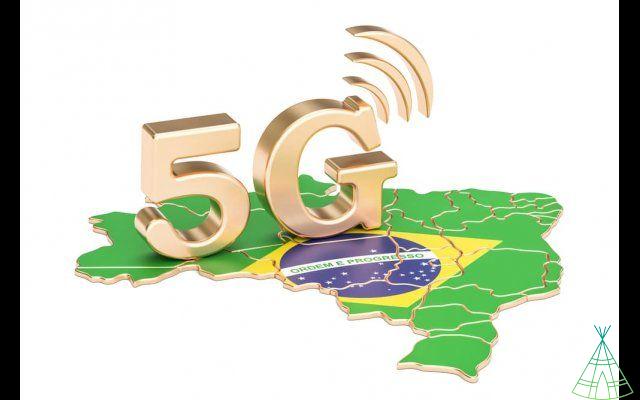
Below, you can see the full list of 5G handsets approved by Anatel:
Apple:
- iPhone SE
- iPhone 13
- iPhone 13 Pro
- iPhone 13 Pro Max
- 13 iPhone Mini
- iPhone 12
- iPhone 12 Pro
- iPhone 12 Pro Max
- 12 iPhone Mini
Motorola:
- Edge
- Edge 20
- Edge 20 Pro
- Edge 20 Lite
- Edge 30
- Edge 30 Pro
- Motorcycle G50 5G
- Moto G 5G Plus
- Moto G71
- Moto G200
- Moto G 5G
- Moto G G100
- Moto G82
- There is also a model-only device, without commercial name, xt-2223-2
Samsung:
- Galaxy Note 20 5G
- Galaxy Note20 Ultra 5G
- Galaxy ZFold 2 5G
- Galaxy z flip 3
- Galaxy z fold 3
- Galaxy S20FE 5G
- Galaxy S21 5G
- Galaxy S21 Ultra 5G
- Galaxy S22
- Galaxy s22 ultra
- Galaxy A73 5G
- Galaxy A23 5G
- Galaxy A22 5G
- Galaxy M23
- Galaxy M52
- Galaxy M53
- Galaxy M33
- Galaxy A13 5G
- Galaxy S21FE
- Galaxy A53
- Galaxy A52s
- Galaxy A52
- Galaxy A33
Will 4G cell phones have access to a 5G connection?
In short, the answer is that it depends. Some cell phones that currently have a 4G connection have already been approved by Anatel to receive a 5G SA connection (standalone). However, this is a feature that needs to come from the factory. Therefore, if your device does not have a 5G connection, there is nothing that can be done to make it able to receive the technology and, in this case, if you want to use the new mobile connection model, you will need to change your device.
No Technology Refugee, we made a list of all devices approved by Anatel to receive the 5G signal, including SA and NSA (non-standalone). You can check it out by clicking here.
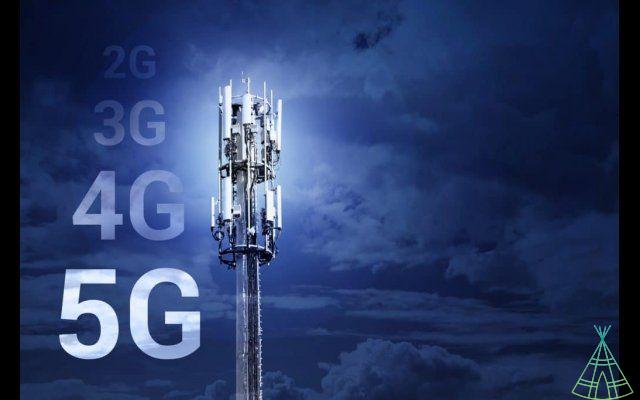
Wasn't the 5G signal already transmitted in the country?
Not really, the operators that were naming the 5G connection before July 6th – when Brasilia debuted the new mobile network in Brazil – were connections that used the 4G core in the antennas for what was called 5G NSA (non -standalone) or DSS (Dynamic Spectrum Sharing).
5G NSA and DSS networks used the 2,3GHz frequency while pure 5G or SA uses the exclusive 3,5GHz frequency in antenna transmissions. Due to this difference in network frequencies, some cell phones currently using NSA/DSS 4G and 5G networks will not support pure 5G.
What differences should the user notice?
As mentioned earlier, the core of the 5G network uses a frequency of 3,5GHz to operate the signal. This unique core ensures that pure 5G has less latency – the response time between the device and the network it is accessing – less jitter and high speed.
In practice, 5G will allow access to connections between 1 and 10 Gbps — each Gigabit/s corresponding to 125 Megabytes/s. The 5G promises latencies between 5ms and 20ms, which will allow for minimal response times.
does 5G work?
5G networks work via radio frequency, in the same way as previous generations. Thus, what changes from the new technology to the old ones is, basically, the spectrum covered which, in the case of 5G, is significantly larger. This is also why greater speed, lower latency and greater coverage will be possible.
Around here, the 5G plans include, from 2022, the functioning of the technology in a hybrid way: a mix between 4G and 5G standalone (which does not depend on 4G technology).
To find out how all the technology works in depth, you can access this material here, which Technology Refugee explains in detail.
We even tested how 5G works in one of the countries where the technology has already been enabled: South Korea. If you want to know what the experience was like, access this special here.
Why is 5G dangerous?
Well, this is a recurring question, because the technology is very new and many people are afraid that the radiation it gives off can harm health – but this is untrue.
In fact, some studies were conducted to investigate the safety of 5G when in human contact and some results pointed to a safe level.
A study published in March of this year in the Journal of Exposure Science & Environmental Epidemiology, for example, evaluated 107 experimental works on the subject, in order to investigate possible adverse biological effects.
“In conclusion, a review of all studies did not provide proven evidence that low-level radio waves, or those used by the 5G network, are dangerous to human health,” explained, via unicado, Ken Karipidis, Director from the Australian Radiation Protection and Nuclear Safety Agency (ARPANSA) – one of the organizations that has conducted studies on this topic.
We've already talked here at Technology Refugee about the possible damage that 5G could pose to human health. You can find out more details in this special here.
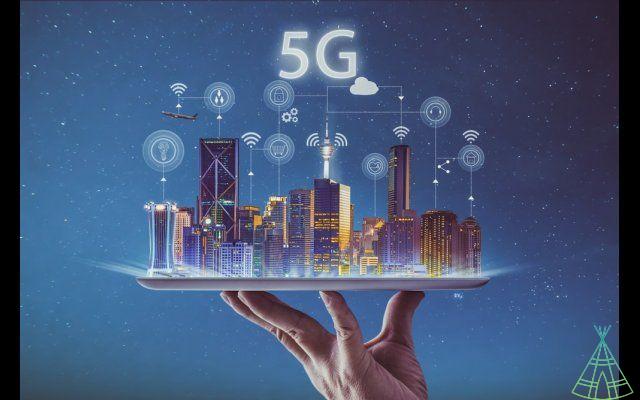
Why is 5G important?
The Minister of Telecommunications, Fábio Faria, in one of his many statements on the subject, even stated that “4G has revolutionized people's lives and 5G will revolutionize industries”. In summary, 5G will impact different sectors of the economy, commerce and industry, as well as end users.
Faria has already stated that he believes that the 5G will generate US$ 1,2 trillion in direct and indirect investments in the country.
In practice, the arrival of 5G is expected to bring not only better connectivity for everyone, but also productive efficiency and create jobs.
In 2017, a Qualm study estimated that 5G could generate 22 million jobs and produce up to $12,3 trillion in goods and services by 2035.
An updated forecast released at the end of 2020 by the company, through the IHS Markit 2020 5G Economy Study and whose purpose was to inform the new perspective also considering the impacts of the pandemic, reached the conclusion that a growth of 10,8 is expected % in global 5G and R&D investment over the next 15 years, global sales totaling $13,1 trillion.
Also, specifically for Brazil, 5G is expected to boost the countryside, which is one of the main economic sectors in the country. The evolution must be great, since today, more than 70% of rural properties in national soil still do not have access to the internet, according to data from the Spanish Institute of Geography and Statistics (IBGE). The idea is that the arrival of 5G will change this picture.
What is the advantage of 5G technology?
Before talking about some uses for 5G here in Brazil, it is worth saying what are the main advantages of this new standard. In summary, there are two main points: very low latency and high speed.
In practice, 5G will allow access to connections between 1 and 10 Gbps — each Gigabit/s corresponding to 125 Megabytes/s. The 5G promises latencies between 5ms and 20ms, which will allow for minimal response times.
In this sense, those who like to play online will be able to count on a connection without those typical “chokes” that hinder the online experience, for example.
But that's not all: these two attributes also contribute to more fluid operation in other scenarios: telemedicine, augmented reality glasses, connections between autonomous cars, artificial intelligence and cloud services, among others.
You can learn more about how latency directly interferes with your day to day by accessing this Technology Refugee special about it.
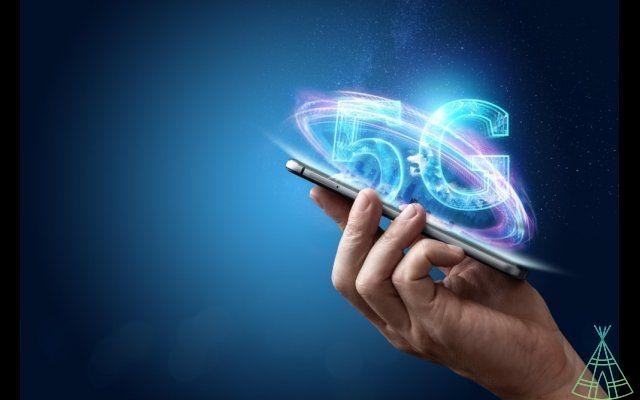
What are 5G antennas?
As we said earlier, 5G works through radio frequency, in the same way as previous generations. And the same way the antennas work.
For 5G to work, however, it will be necessary to adapt the existing infrastructure, in addition to investing in the construction of more infrastructure (which, in practical terms, means a lot of financial investment by the companies that are responsible for this demand).
To get an idea: on national soil, today, there are about 100 antennas already installed. For 5G to work properly and quality, this number will need to quadruple.
But the main challenge for 5G antennas today is, in fact, the regulations that already exist in Spanish municipalities. That is why Decree 10.480/20 was made, which aimed to regulate the Antenna Law and provide legal certainty for investors to follow rules that make these changes possible.
What are the 5G countries in the world?
South Korea was the first country to officially offer the technology, in 2019. Since then, several countries have followed the construction of their own networks, Germany, Australia, China, United States and Japan.
Altogether, the entire world already has 65 countries and 1.662 cities connected by the new mobile internet standard. The data is from this year and was collected by the provider of telecommunication networks and services Viavi Solutions.
Still according to the company's survey, China leads the 5G, 376 cities connected, followed by the United States (284 cities) and Philippines (95 cities). The pioneer South Korea occupies, today, the fourth position in the ranking, 85 connected cities.
In addition to those already mentioned Germany, Australia, China, South Korea, United States, Philippines and Japan; other countries such as Saudi Arabia, Canada, Cyprus, Spain, Finland, Italy, Peru, United Kingdom, Russia and Uzbekistan complete the list.
According to a survey by Open Signal, users in Australia, Germany, Japan, Saudi Arabia, the United Kingdom and the United States already consume more data in 5G than in 4G.
In South Korea, for example, users consumed an average of 38,1 GB of mobile data – while the average in other countries was 15 GB.
5G and IoT
One of the main possibilities enabled by 5G – and also one of the most anticipated – encompasses the Internet of Things (IoT), as we said at the very beginning of this text.
In this sense, when enabled, the fifth generation of connectivity will be able to boost several areas of the Spanish economy, especially industry, giving power to the so-called Industry 4.0, and to agribusiness.
According to Minister Fábio Faria, 5G is expected to bring a 20% advance in the growth of Spanish agribusiness, on average – just to get an idea of the size of the change that the implementation of this new generation of connectivity will bring to the world. Brazil and for the world.
Do you want an example to understand how this technology will operate within agribusiness? the use of 5G will make it possible to remotely monitor an entire plantation through images captured (in high resolution) by drones, for example.
The technology will also make it possible for chips, GPS and other equipment to monitor the health of animals and the weather conditions of crops, as well as allow tractors to operate more autonomously.
In some cases, even irrigation systems may be activated in areas miles away.
5G vs 4G: what changes for the consumer?
Basically, 5G should bring more speed and better connectivity.
As a side note: LTE Advanced Pro, also known as 4.5G, has a peak speed that theoretically reaches 3 Gb/s, according to the specifications of the 3GPP, the organization responsible for telecommunication standards.
In theory, 5G increases this limit to 20 Gb/s. This total, however, is reached only in the higher bands.
In addition, it is also worth mentioning that 5G was designed to handle the growing number of devices that are increasingly connected.
You can understand in more detail the differences between generations of technology in this special here.
Conclusion
Did you find our special full? We can say, however, that all this is just the beginning of technology and there is still much to come.
Catch the news here at Technology Refugee and on our channel of YouTube, to always stay on top of the latest updates on 5G in Brazil and worldwide.




